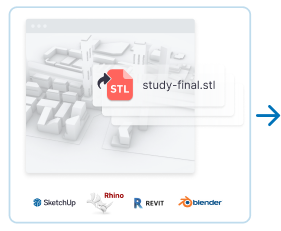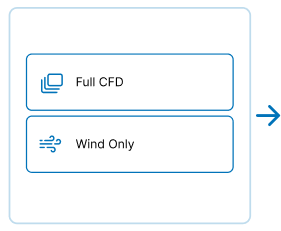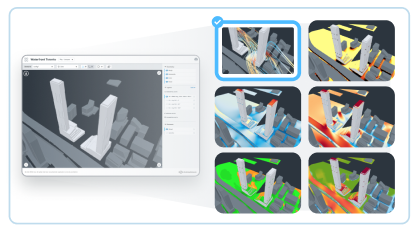How it works
Three steps to high-performance designs
Analyzing your early designs with Orbital Stack is simple, with outputs that are easy to understand, and results in seconds that keep your project workflow on pace.
1. Configure:

- Upload your CAD geometry
- Specify your location
- We’ll do the rest!
2. Simulate:

- Choose your simulation path
3. Explore:

- Analyze the results
- Explore new directions
- Share ideas with others
Built to meet evolving design needs
Orbital Stack incorporates several simulation engines to provide localized, contextualized analysis of your designs.
A solar simulation engine models the movement of the sun, enabling insights into shadowing at your outdoor spaces at different times of the day and seasons of the year.
Additionally, two wind simulation engines strike a practical balance between analysis precision and timeliness:
AI-powered Wind Simulation Engine
A concept-stage wind simulation engine that leverages artificial intelligence to provide on-demand analysis—enabling rapid design feedback and iteration.
Intended for the highly iterative early stages of the building design process, this first-of-its-kind machine learning (ML)-powered simulation engine leverages over four decades of RWDI’s proprietary wind-tunnel data to deliver robust, on-demand insights.
CFD-powered Wind Simulation Engine
A refinement-oriented wind simulation engine that employs computational fluid dynamics (CFD) for more precise wind modeling suited to more mature designs.
Unlike general-purpose physics simulators, Orbital Stack’s CFD engine is specifically tailored to urban flow simulation and is validated against decades of wind tunnel results—providing you with the most accurate insights possible, as efficiently as possible.